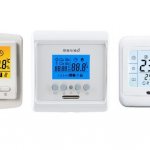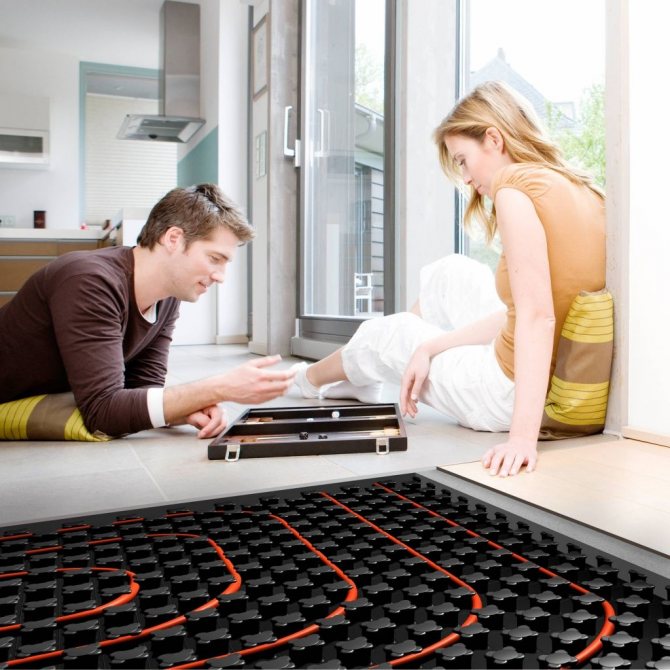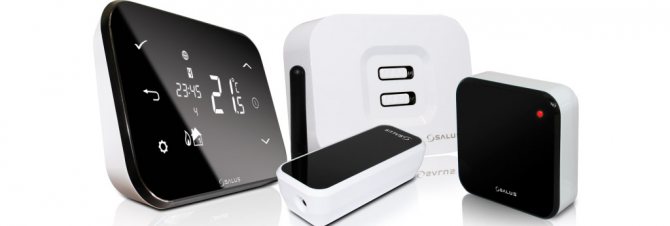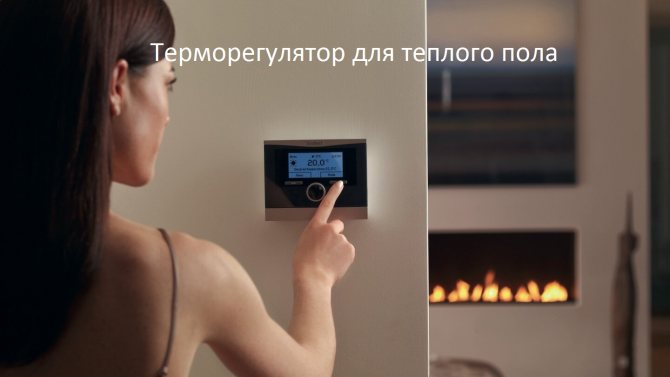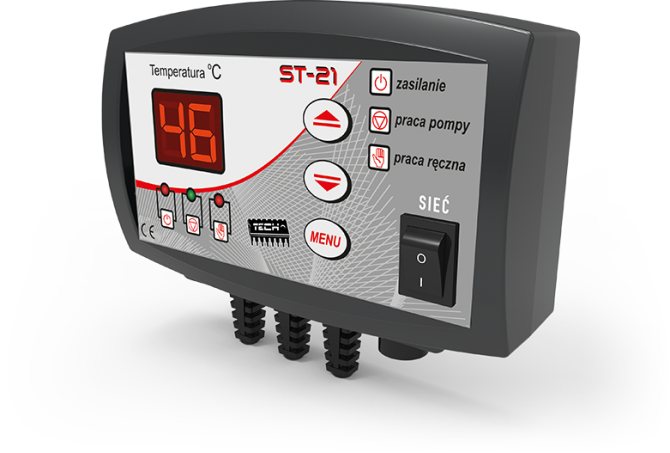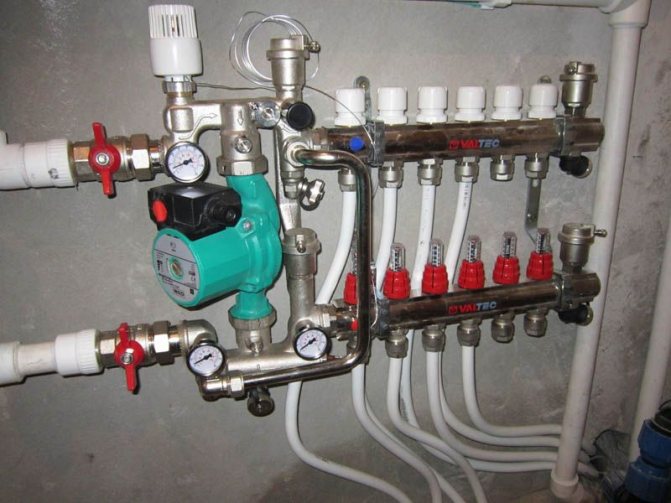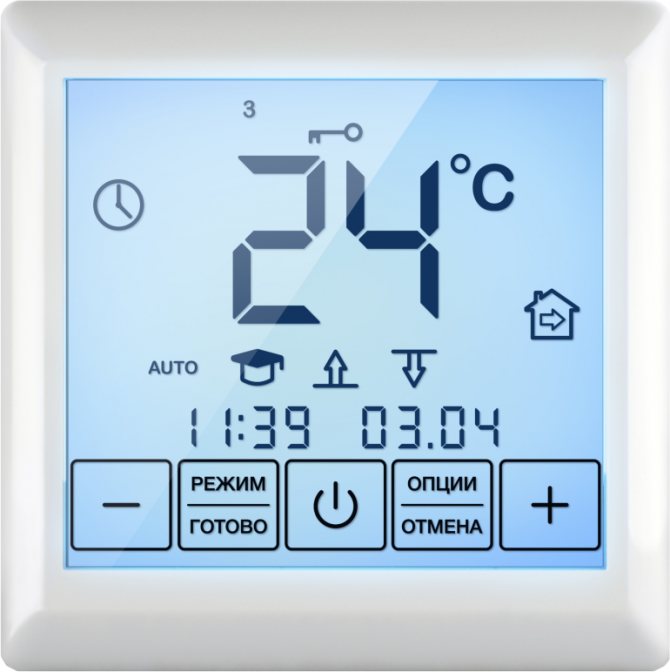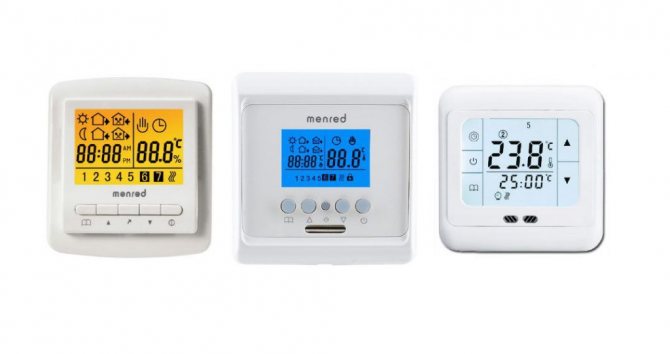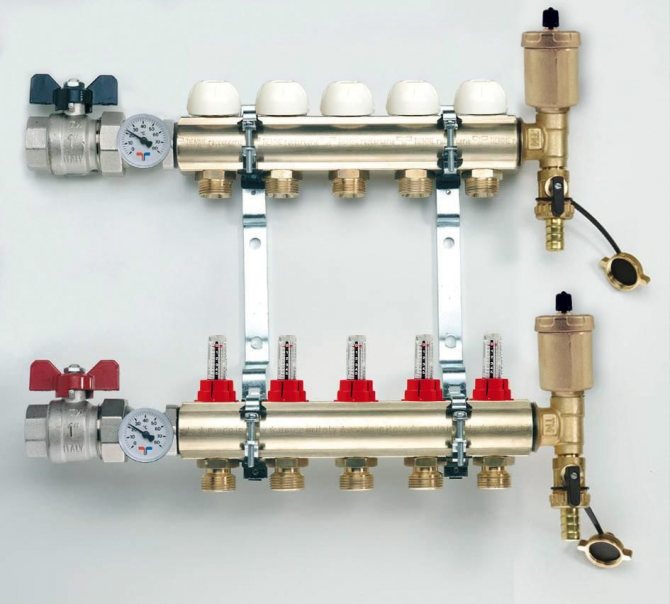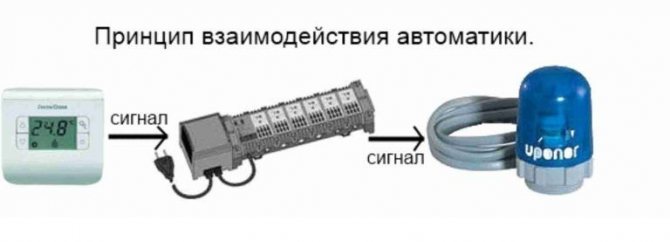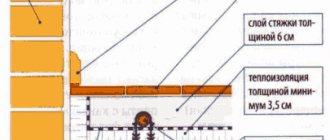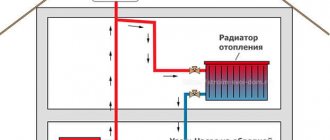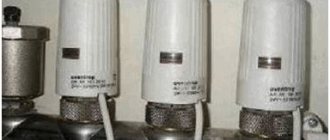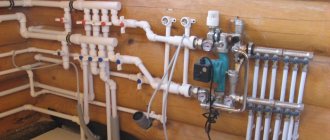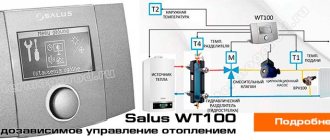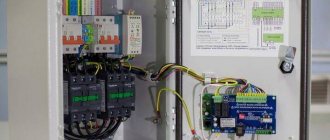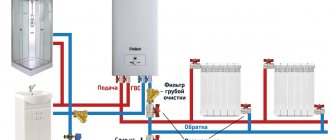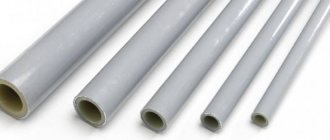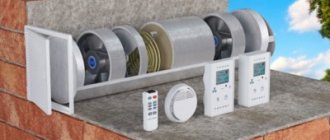Automatic and mechanical thermostats
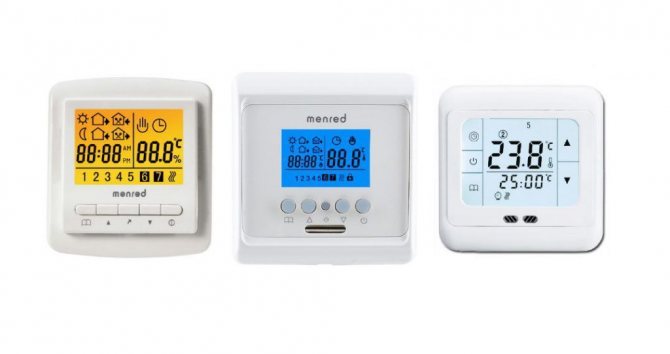
Thermostats for underfloor heating
There are several ways to control underfloor heating. All types of devices can be conditionally divided into two types: automation and mechanics. What is the fundamental difference between these devices?
- Automatic floor controllers are cheaper than automatic controllers for a water heating system. The average cost of a thermostat for an electric floor rarely exceeds 1000 rubles. Thus, automatic equipment for an electric floor rarely costs more than 3000–4000 rubles;


Scheme of operation of automation for electric underfloor heating - The automatic control system for a water-heated floor requires more complex technological solutions, the average cost of which often exceeds 20,000 rubles.

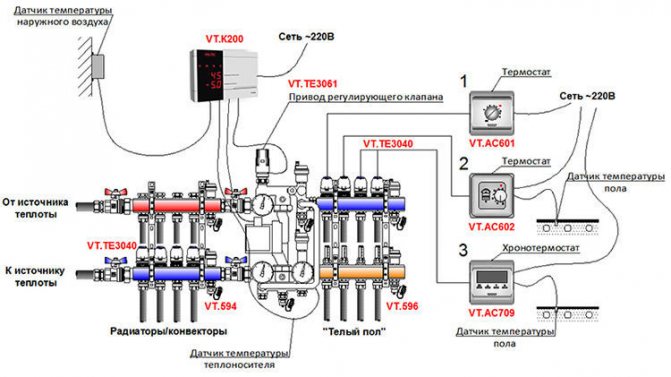
Automatic temperature control system for water heated floor
As for conventional mechanics, it is much cheaper and is designed for manual adjustment of the floor heating operation. The lack of a screen and thermometers is the main disadvantage of mechanical thermostats. With the help of devices of this type, you will not be able to adjust the operation of the warm floor to the desired mark on the thermometer. The regulation of such heating systems is carried out based on one's own feelings: hot means the tap must be screwed on, cold must be unscrewed.
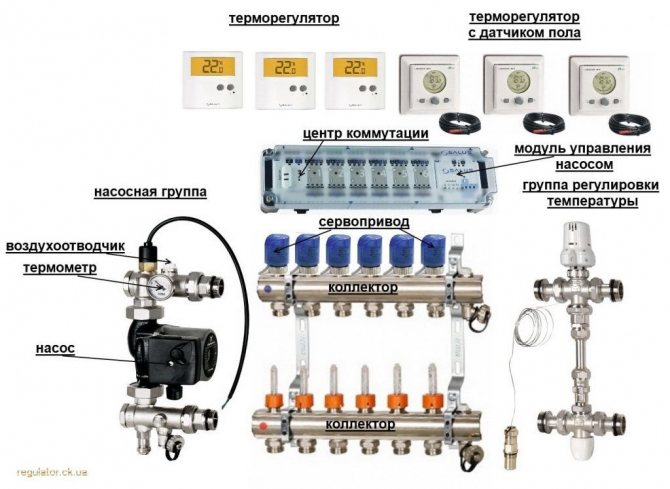

Underfloor heating equipment
The mechanical controller is in low demand in the thermostat market, since it is significantly inferior in popularity to electric thermostats with a display. In addition, electrical automation is so simple that even children and the elderly can operate it.
Automation capabilities
Automation takes part in the control of the following devices: circulation pump, thermostatic heads, servo drives, thermostatic valves or a gas burner.
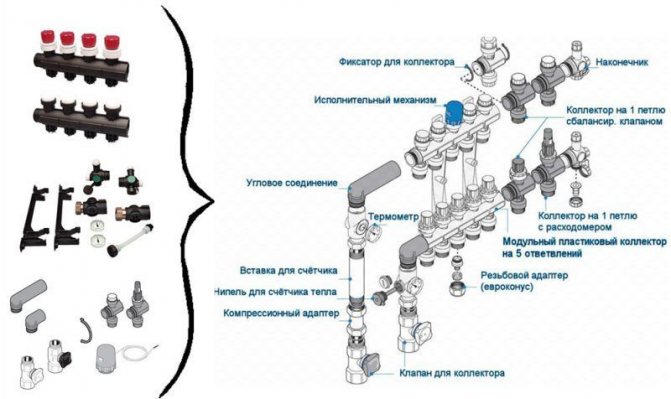

Collector device for underfloor heating on automation
- Circulation pump control is the easiest way to control the operation of a water floor. The device allows you to turn on / off the pump depending on the temperature of the water in the pipes. This control method is not suitable for a house where there is one common pump, since the system turns off the heating in the entire room. But this method of controlling the temperature in the house is ideal for rooms where there are several pumps;
- Thermal head control is a semi-automatic control system that allows heating to be turned off under certain conditions. For example, the thermal head closes the three-way valve as soon as it detects a high temperature of the water in the pipes. The low temperature of the coolant triggers a reverse reaction - the system opens the valve of the hot water pipe;


Mixing unit for underfloor heating Valtec for 2-4 circuits - Servo control. In this case, a servo drive is mounted on the collector, with the help of which the coolant supply to different circuits is adjusted. This type of controller is perfect for controlling the temperature in several rooms at the same time;
- The weather controller adjusts the floor temperature depending on the weather conditions. The system consists of a complex set of sensors and controllers, some of which are installed on the street, and others - in the apartment. This method allows you to save up to 20-30% of gas consumption or 15% of firewood for space heating.
As for private houses with 2-3 rooms, it is not necessary for them to install expensive and complex automatic systems. For effective control, automation is sufficient for a circulation pump or a conventional mechanical valve.
Electric underfloor heating control
Consider how to regulate a warm floor built on electric film heaters or cables. Such a system has control features:
- a cable or other heater must operate in certain temperature conditions (unless a self-regulating cable is used). Overheating leads to a reduction in the service life, and underheating leads to a decrease in the efficiency of the heating system;
- electric type floor heating controllers are designed for a certain power of the heating elements. If you use a sensor with a low control threshold, it will not allow the floors to warm up well enough. To cover a large area, several regulators can be used, their power indicators are summed up;
- thermostats are sensitive to moisture. Therefore, to control the microclimate in a bathroom or other damp room, it is recommended to move the main unit outside, pulling the sensor lines through the wall.
The regulation principle is quite simple. The control unit, depending on the readings of the control sensors, supplies or interrupts the power supply circuit of the heating elements. It is rational to design an electric floor system directly with thermostats. Each of them will require laying one of the sensors inside the underfloor heating structure in the area of the heating elements.
Based on the main features and requirements for electric heating, you can create a list of tips for installing and organizing a heating control system.
- Thermostats are selected according to the power of the floor. If it is large, it is rational to place several devices at different points in the room to summarize their characteristics.
- If the electric underfloor heating system already has a cable heating control unit, simple thermostats can be used for control, which have one air temperature control sensor.
- The regulator should be connected strictly following the instructions, including in the context of the type of wires used.
Individual and group heating controllers
Devices of this type belong to a separate category, since they allow you to regulate the temperature of the water supplied to several collectors. They operate on a voltage of 24-50 V and can be used even in rooms with a high level of humidity - baths or saunas.
Water underfloor heating control on the outside temperature
How does it work? Complex regulation combines group and zone automation. The complex type controller usually takes into account the specifications, combinations and layouts of films or pipes.


Underfloor heating room thermostat, underfloor heating controller and servo drive
The signal from the group manifold is fed to the servo which drives the flow control valve. Thus, group regulation is the control of the temperature of the water in the pipes, which is realized due to:
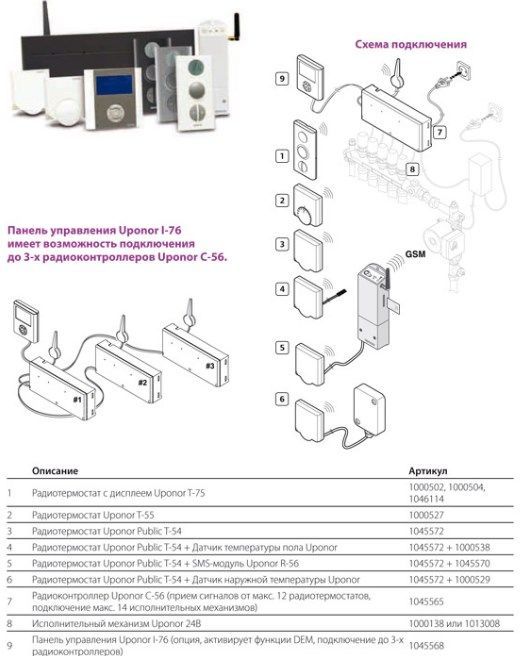

Uponor wireless underfloor heating system DEM
- Grouping of mixing units, which allows you to adjust the parameters of the water circulating in the pipes in several zones or collectors at once;
- Connections of individual mixing units, due to which branching of the group connection occurs - individual adjustment points are created for underfloor heating. Branching into individual mixing units allows you to control the underfloor heating through one unit;
- Maintaining a constant temperature in all rooms.Implemented with a thermostatic head mounted on a two- or three-way valve;
- Climate control. In this case, a complex system of several sensors is used to maintain the temperature of the coolant according to the specified parameters.
Zonal (individual) regulation is implemented due to:
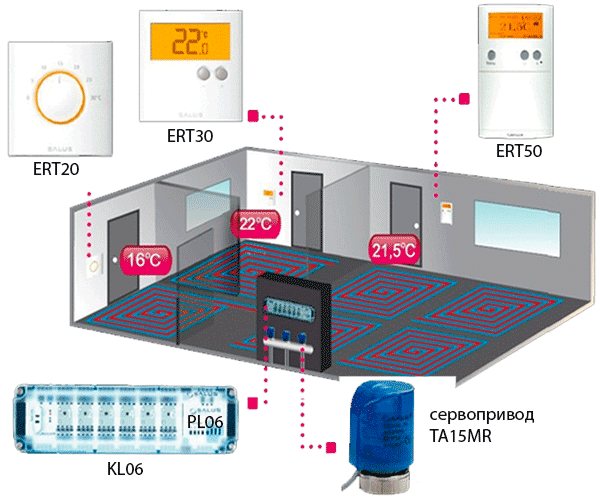

Floor heating automation
- Room automation installations, the sensor block of which allows you to regulate the air temperature in a single room according to the specified parameters;
- Zone automatic floor heating is used to automatically control the temperature in the room. The zone control unit is installed in rooms, the functioning of which is impossible without maintaining the temperature at a constant level (swimming pools, saunas, greenhouses).
Zone regulation is carried out as follows - the user sets the required parameters for the thermostat. A deviation of the temperature regime up or down entails a corresponding reaction - the device turns on or off the heating using a warm floor.
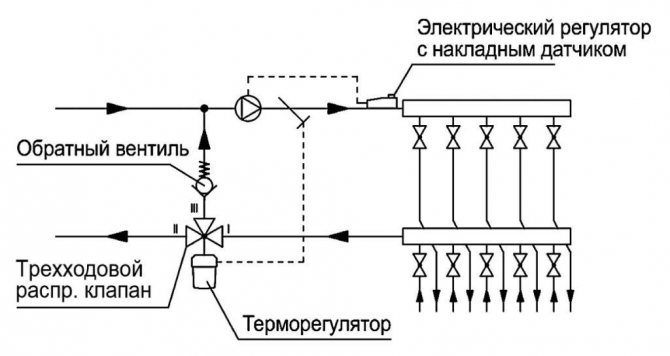

Scheme of zonal regulation of water underfloor heating
Preparation and commissioning
When setting up underfloor heating, a thermal head is used in the form of a conventional tap, which is installed for water supply and reverse flow. Such a system is not assessed unambiguously:
- firstly, saving finances for the installation of the circuit is a plus;
- secondly, complications in operation, that is, frequent use of the thermal head disables it, an early replacement is required.
We recommend: How to repair a warm floor?
A convenient device is called a flow meter (or rotameter), which is installed near the collector at the circuit holes. Adjustment in this situation is the control of device readings (0.3 ... 0.5 liters).
The first start, done correctly, reveals weak points, malfunctions, possible malfunctions in the floor heating system.
Every year, with the onset of a cold snap, heating is started.
Wired and wireless thermostats
Room thermostats are only used for zone heating control in a room. By the type of connection, devices of this type are divided into two categories: wired and wireless thermostats.
Room thermostat connection
The wired controller is installed inside rooms at a height of 1–1.5 m above the floor - in a place where you can most accurately set the actual room temperature. Experts do not recommend installing thermostats from the outside of the house or in an area where direct sunlight falls, as well as near working appliances - refrigerators, washing machines, stoves, etc.


Connecting a wired controller for underfloor heating
Practice has shown that for a zonal control scheme, one thermostat installed on the supply manifold is sufficient.
The wireless controller for the water floor is an indispensable device for apartments in which the renovation has already ended, and the owners do not want to lay a cable to the boiler. Wireless models are placed in the immediate vicinity of a boiler (electric or gas) or other regulated heating systems.


Wireless thermostats for water floor heating
The thermostat is controlled via a radio frequency channel. The device is powered by 2 AA batteries, and the receiver is powered by 220 V.
About the role of the sensor
It should be remembered that in setting up a warm floor there is one irreplaceable part - this is the sensor. The control unit adjusts the floor heating and saves electricity. The greatest savings come from programmable devices, but they are expensive.
The ability to adjust the warm floor as needed saves energy and, consequently, money.
The effect lies in the correspondence of the electrical power of the floor and the meter. Heating the floor to the required temperature is only possible with sufficient power. Therefore, when buying, you need to be interested in the characteristics of the product.
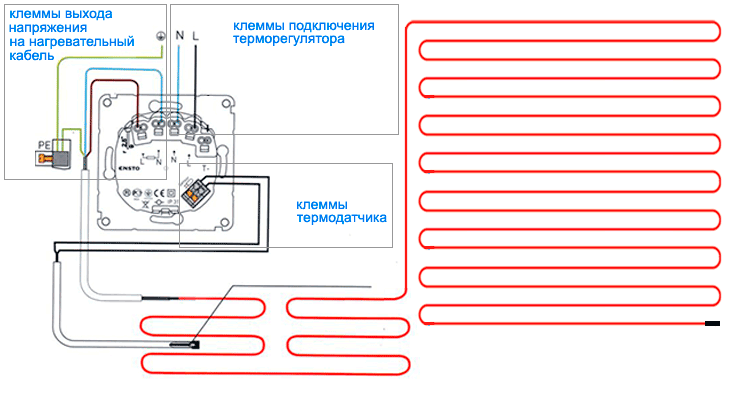

In some cases, in rooms with a large area, it is necessary to connect more than one regulator.
An important point is the type of setting. You should find a way for yourself so as not to make holes in the wall, but limit yourself to a box for a thermostat. Do not deviate from the recommendations in the instructions.
Both functionality and appearance are all significant factors. You can consult with specialists. Particular care must be taken when installing an insulated floor in rooms subject to moisture (bathroom).
The control unit must never be installed inside, you need to pass the cable to the heaters through the hole in the wall and place the sensor in the corridor.
We recommend: How to install underfloor heating on wooden joists?
Electronic tuning equipment is able to serve different operating modes of floor heating with a high degree of energy savings. But this is an expensive technique.
- Similar posts
- How is the installation of a warm floor Lavita carried out?
- How to install a warm floor in the kitchen?
- How to make the underfloor heating strap correctly?
- What is included in the Valtek underfloor heating kit?
- How to install Devi underfloor heating?
- How to put underfloor heating on the ground?
